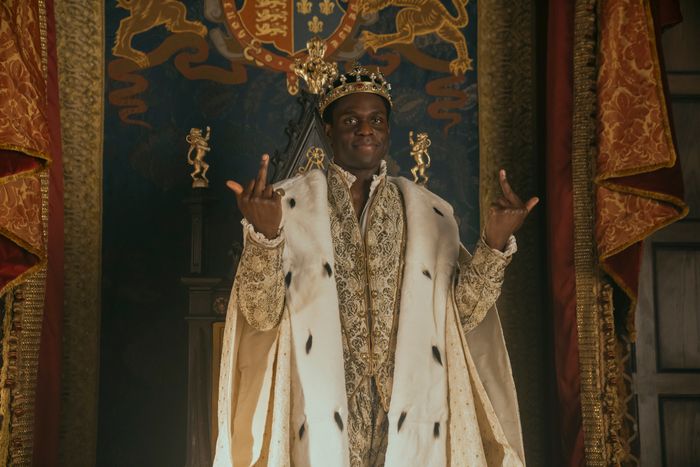
The premise of the new Prime series My Lady Jane is both straightforward and simple to explain. First, what if instead of being yet another show about Henry VIII or Elizabeth I, there was a show about Lady Jane Grey, who was beheaded nine days into her rule as queen? Her largest cultural imprint is as the subject of one very beautiful and tragic painting, but slotting her into a familiar arc of Tudor history isn’t that hard to get an audience onboard for.
Next, what if instead of being just the story of Lady Jane, it was an alternate history? Rather than have the one thing people may know about her be true, what if it were not true so Jane could become a fun, ahistorically feminist icon who romps around the Tudor court and advocates for women’s education and regular gynecological care? A little trickier to grasp in an elevator pitch, but okay! Lady Jane Grey alternate history. Got it.
Also, there are shape-shifters.
The instinct here may be a record-scratch I bet you’re wondering how I got here reaction, but it’s important to push past that and let the beauty of a show that’s essentially Tudor Animorphs wash over you. My Lady Jane, which is based on a book series that is also about shape-shifters, spends the first ten minutes of its pilot setting the scene for Jane’s ascent to the throne. She has ambitious relatives who need her to marry well, and her cousin the king is in failing health. She wants to run away, as does every heroine at this point in her story, and she’s devoted to her lady’s maid and best friend, Susannah, so they decide to run away together. When they’re caught, her friend tries to run or, rather, she flies away by transforming into a hawk. Then the narrator (yes, there’s a narrator) says, “Did I mention that in this world, some people can transform themselves into an animal?” and proceeds to offer a brisk, 70-second overview of the whole shape-shifting deal. They’re called Ethians, they realize they can shape-shift during puberty, they’re being hunted to extinction, etc. You get the gist.
If you want, you can read My Lady Jane’s whole shape-shifter premise as an Important Statement about cultural identity and marginalization. Ethians are born with their powers and there’s no way to control who will and will not inherit shape-shifting, so it’s pretty easy to slide the whole thing into “This is a metaphor for queerness,” “Let’s celebrate our differences,” or whatever version speaks to you most. My Lady Jane does emphasize this occasionally throughout the season, and it’s not especially subtle about it, either. (Again, there is a narrator.)
The other option, though, is just as rewarding and arguably a more enjoyable way to watch this show: It has shape-shifters! That’s so silly! Characters who seem like regular people keep suddenly turning into bears or puppies or what have you, and every single time, Jane or whoever else is around is like, “What! They’re a shape-shifter too?!” The politics of shape-shifter exclusion is goofily tied up with the real politics of the English Reformation and the attempt to wrest the monarchy from the control of the Catholic Church. The vast majority of animals who are also people were filmed with real animals, meaning there’s less of the awkward CGI animal business than you might expect, and there’s a constant, ticklish awareness of how funny it is to look at a real cocker spaniel and think, Ah yes, that’s a woman in dog form.
Why not do overly familiar historical events with shape-shifters this time? The Salem witch trials with shape-shifters is too obvious, but what about the first Continental Congress? (Imagine the Founders signing an alternate version with their little paws dipped in ink!) Or what about Fleet Street and the rise of daily newspapers in London but with shape-shifters! Everyone’s heard of the Revolutionary War, sure, but what if the show were intstead about the War of 1812 and Dolley Madison’s a shape-shifter! Harlem Renaissance shape-shifters! Jeeves and Wooster but shape-shifters! High-seas adventurers onboard a Barbary pirate ship … and they’re shape-shifters. It works for everything.
TV loves a historical setting right now, and sometimes the reasons are boring. The shows can be comfortable adaptations, they can embrace an aesthetic without having to deal with the interior cultural reality, and they can feel currently relevant without actually having to wrestle with current relevance. If we must exist in an era when so many shows are set in the past, why not mess with it? Why not add shape-shifters?! Everything else about what works in the TV landscape is up for debate, so we may as well go all in on something fun.


